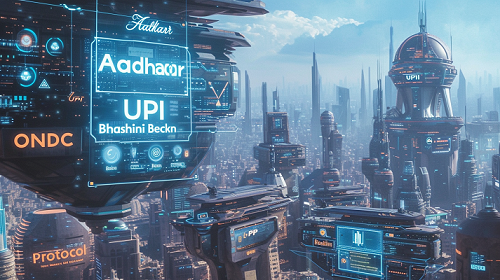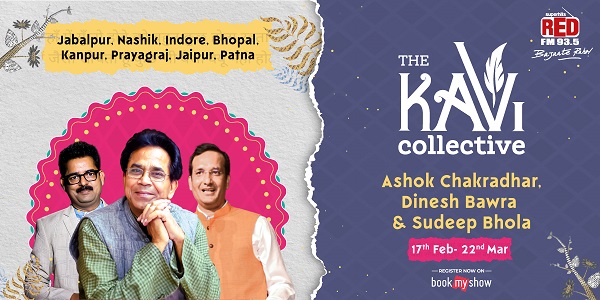The Future Heroes of India's Digital Evolution
India is a unicorn. Change here starts at a billion people. The countrys digital transformation journey, marked by initiatives like Aadhaar and UPI have proven this repeatedly.

India is a unicorn. Change here starts at a billion people. The countrys digital transformation journey, marked by initiatives like Aadhaar and UPI have proven this repeatedly. We have written the DPI playbook for the world. We delve into 5 less-publicised yet pivotal developments that will shape Indias sustainable and technologically advanced future using the 3 levers of Samaj, Sarkaar and Bazaar.
Architects of Indias Digital Future
1. Beckn Protocol: Decentralised Foundations
The Beckn Protocol, very unlike the Ghost Protocol, but very much on a Mission Impossible - crafting Indias decentralised future. It embodies the visions of web inventor Tim Berners-Lee and blockchain pioneer Satoshi Nakamoto. Heres why its a game-changer:
Open & Interoperable
Its open-source nature fosters universal participation, powering platforms like ONDC that challenge monopolies and empower social sectors by creating significant opportunities for MSMEs and artisans. Recent estimates suggest ONDC transactions can potentially generate $250-300 Bn in GMV (gross merchandise value) by 2030, driving Indias internet economy to $1 Tn.
Unbundling the Ecosystem
Beckn is a set of lightweight, open, and interoperable specifications, much like SMTP for emails but for digital transactions. It is designed to create peer-to-peer decentralised networks for pan-sector economic transactions and empower buyers and sellers to transact without intermediaries or apps. This empowers small businesses and gives consumers greater control, a crucial aspect in Indias diverse market.
Trust & Transparency
By integrating Discovery, Order, Fulfilment, and Post-fulfilment into the internets core, Beckn supercharges the digital economy, creating a seamless synergy between buyers and sellers. This empowers small businesses and gives consumers greater control, a crucial aspect in Indias diverse market.
Real-world Impact
Beyond e-commerce, Beckns applications extend to education, healthcare, mobility, and governance, impacting millions nationwide. Beckn powers
-
Namma Yatri, a peer-to-peer autorickshaw booking app in Bengaluru, India, challenges ride-hailing giants (45,000 autorickshaws already onboarded).
-
Open Kochi is a multimodal mobility network built on Beckn, offering citizens a seamless transportation experience.
-
OGa is an open network in Gambia leveraging Beckn for a variety of services, from agriculture to logistics
2. Bhashini: Multi-lingual AI Breaking Barriers
Captain Kirk and the crew of the USS Enterprise all carried communicators. These were also Universal Translators and (as per the story) were first used in the late 22nd century on Earth for instant translation of well-known Earth languages. Bhashini may have proved them wrong.
Inclusive Development
Bhashini is a multi-lingual AI platform currently under development by the Ministry of Electronics and Information Technology (MeitY). It aims to provide accessible and inclusive AI tools for Indian languages, breaking down language barriers and fostering broader participation in the digital economy.
Citizen Participation
Every Indian can help build an open data repository to digitally enrich their language through Bhasha Daan - the Suno India, Bolo India, Likho India, and Dekho India initiatives. This participatory approach ensures that Bhashini reflects the true diversity of the Indian language. Just recently, Prime Minister Modi utilised Bhashini to address the Tamil-speaking audience at the Kashi Tamil Sangam, showcasing its potential for national communication.
3. Digilocker: Authentic Digital Documents
A Monster.com survey shows 82% of Indian employers encountered fake resumes in 2022, and the average cost per bad hire is ₹4.2 lakh. Digilocker addresses this pervasive issue of fake resumes and degrees, providing every Indian citizen and entity access to authentic digital documents.
Combating Fraud
Digilocker ensures citizens can access authentic digital documents. Digilocker tackles the widespread issue of fake documents, verifying credentials for over 240 million registered users and issuing over 6 billion documents as of January 2024.
Benefits beyond Individuals
Digilocker streamlines bureaucratic processes for government agencies, enabling secure document exchange and reducing administrative overhead. Some examples:
-
During income tax filing, integration with Digilocker enables the Income Tax department to pull PAN card details, reducing verification time seamlessly. Over 30 million taxpayers have linked their PAN with Digilocker.
-
For public sector bank recruitments, Digilocker APIs allow candidate identity and document verification by banks in real-time, cutting processing time from 4 days to 4 hours.
-
The Central Board of Secondary Education uses Digilocker to deliver exam certificates to over 34 million students electronically. This has reduced certificate printing and logistics costs.
4. Societal Platforms: Digital Solutions for Social Challenges
I was totally intrigued by this concept when I first heard Sanjay Purohit discuss the analogy of the forest versus the farm to illustrate two fundamentally different approaches to systems organisation and governance. The forest is a decentralised, self-regulating, and resilient system, while the farm represents a centralised, controlled, and uniform system. This is also the basis for Societal Thinking and Societal Platforms - an EkStep-backed initiative.
This approach involves a set of values, frameworks, and principles that have been developed through iterative cycles of building Societal Platforms in collaboration with over 150 change leaders, thinkers, and enablers across 25 countries. The emphasis is on empowering individuals to address their diverse problems with agency, dignity, and choice.
Shifting the Paradigm
Societal Platforms move beyond technology, adopting a systemic approach to social issues through open innovation and shared infrastructure. This philosophy is evident in platforms like the Maternal Care: The "Improving maternal care by making midwifery mainstream" platform, has trained over 10,000 midwives in India, reaching 3.6 million women and 1.2 million children with essential healthcare. This has led to a 25% reduction in maternal mortality rates in target regions.
Societal Platforms in Action
Water Security: The "Water Resilience for 100 Million" platform, has provided access to safe drinking water for over 5 million people in rural India. This has resulted in a 30% decrease in waterborne illnesses and a 20% increase in agricultural productivity in targeted areas.
The "100 Million Farmers School" has empowered over 10 million farmers with financial literacy and business skills, leading to a 25% increase in income for participants.
5. Diksha: Scaling Education Access
The most well-established, Diksha, the EKStep Foundations education platform, is pivotal in scaling education and making it accessible to a broader audience in India. It brought 600 million textbooks alive for 180+ million students and 7+ million teachers via QR codes to deliver education at scale.
Addressing the Content Gap
Diksha offers over 60 billion minutes of learning across diverse subjects, catering to educational needs in all 28 states and 8 union territories.
Overcoming the Digital Divide
Dikshas offline accessibility and partnerships with mobile network operators ensure education continuity even in remote areas, bridging the digital divide and reaching previously underserved communities.
Personalized Learning for All
Diksha utilises AI-powered algorithms to personalise learning pathways, leading to improved test scores and increased student engagement. This focus on individual needs makes education more effective and engaging for all. My personal vision for the platform is the possibility of students to learn any course in any language from any university (online or offline) and bring it all together as a degree/certificate via a nationally accepted credit system.
These 5 innovations are not just technological marvels; they represent a paradigm shift in how public infrastructure is designed, perceived and utilised. By focusing on inclusivity, accessibility, and self-sustainability, India is showcasing to the world that technology, when thoughtfully implemented, can be a powerful catalyst for societal transformation and global integration.
![]()






















